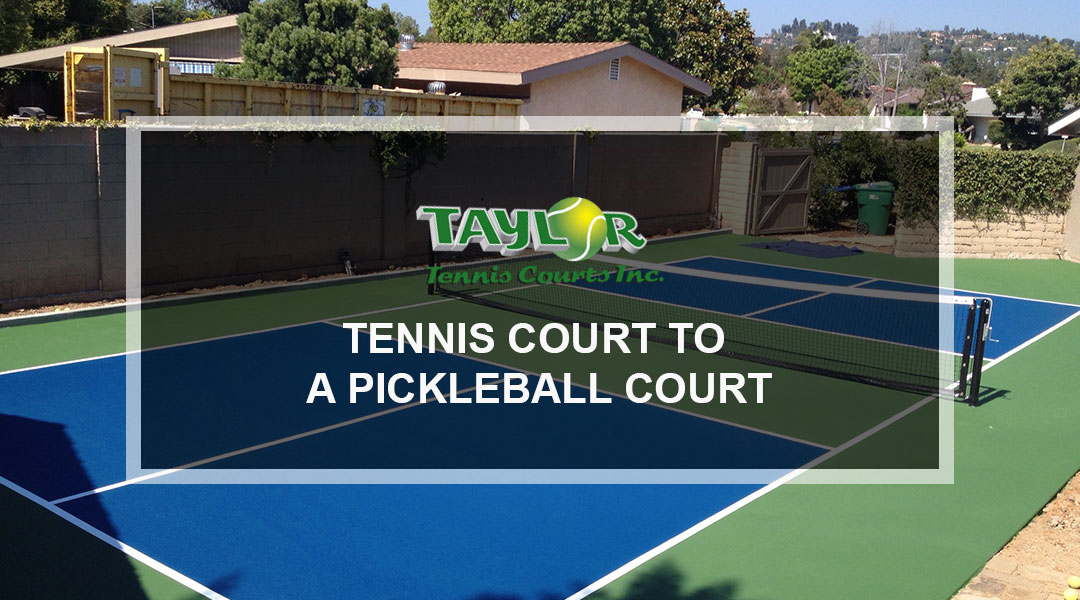Top Quality Pickleball Court Construction for each Degree of Play
Top Quality Pickleball Court Construction for each Degree of Play
Blog Article
Lasting Practices in Pickleball Court Construction You Must Know
As the appeal of pickleball continues to climb, so too does the demand for lasting methods in court construction. The effect of these methods expands much beyond the court itself.
Choosing Eco-Friendly Materials
Selecting environment-friendly products is a vital step in the construction of sustainable pickleball courts. The option of lasting products not only minimizes ecological effect yet also boosts the long life and performance of the court. Secret products consist of recycled rubber for the surface area, which uses outstanding sturdiness and shock absorption while diverting waste from garbage dumps.
Additionally, making use of locally sourced products decreases transport discharges and sustains regional economic situations. Pickleball court construction. Using indigenous woods for fence and seats can provide a lasting visual while guaranteeing strength versus the elements.
Integrating absorptive products for court foundations can even more add to sustainability by permitting natural water drainage and decreasing overflow. These options not only secure neighborhood communities however likewise promote much healthier play settings.
Efficient Water Drainage Solutions
While the selection of green materials is essential, applying reliable water drainage remedies is just as essential for keeping lasting pickleball courts. Correct water drainage not just secures the court surface area from water damage however likewise lessens disintegration and drainage, advertising ecological stability.
Efficient drainage systems can include absorptive paving, which enables water to infiltrate the ground as opposed to pooling externally. This decreases the possibility of standing water, which can lead to mold and mildew and various other maintenance concerns. Additionally, including tactically placed water drainage networks and swales can direct excess water away from the court area, guaranteeing a dry playing surface area and preventing soil erosion.
Utilizing native vegetation in the landscaping around the courts can even more enhance drainage by absorbing excess water and lowering overflow. These plants require much less irrigation and advertise biodiversity, lining up with sustainable practices.
Moreover, it is critical to on a regular basis preserve the water drainage system to ensure its lasting performance. This consists of clearing up particles and monitoring for obstructions. By focusing on reliable drainage services, pickleball court builders can substantially add to the sustainability and long life of the facility, ultimately benefiting both players and the environment.
Energy-Efficient Illumination Options
As the demand for pickleball remains to expand, incorporating energy-efficient lights alternatives into court style has actually come to be significantly important for sustainability. Traditional lighting systems frequently consume excessive energy, contributing to greater functional expenses and environmental impact. For that reason, embracing modern-day, energy-efficient innovations is important for both new constructions and renovations.
LED (Light Emitting Diode) lights attracts attention as a top option as a result of its durability and energy financial savings (Pickleball court construction). Compared to conventional lighting, LEDs make use of around 75% less power and can last up to 25 times much longer, substantially reducing upkeep costs. Moreover, the directional nature of LED lights lessens light contamination, making sure that lighting is concentrated on see this page the court instead of bordering areas.

Lasting Surface Area Alternatives
Exploring lasting surface choices for pickleball courts has obtained traction amongst look here home builders and players alike. The focus on eco-friendly materials not just aligns with the expanding ecological awareness but likewise enhances the efficiency and resilience of the courts.
This material gives outstanding shock absorption, decreasing the danger of injuries for gamers while promoting sustainability. These ceramic tiles are simple to set up and replace, and their flexibility enables for different court setups.
All-natural yard courts are also becoming a sustainable selection, advertising biodiversity and minimizing the warm island result. Nevertheless, they require routine upkeep and water, which may not align with all sustainability objectives.

Water Conservation Methods

Another reliable strategy entails the setup of rainwater harvesting systems. These systems collect and store rain for use in maintaining court surface areas and landscape design. This method not just conserves potable water yet likewise decreases reliance on metropolitan resources.
Furthermore, employing drought-resistant landscape design around the courts is vital. Native plants call for less water and are much better adapted to local environment problems, hence decreasing overall water intake. Furthermore, making use of efficient irrigation systems, such as drip irrigation, makes certain that water is provided directly to plant roots, reducing dissipation and waste.
Verdict
Incorporating lasting techniques in pickleball court building dramatically adds to ecological preservation and source effectiveness. Making use of environment-friendly materials, applying reliable water drainage services, and taking on energy-efficient lighting choices can greatly decrease eco-friendly impact. In addition, discovering lasting surface alternatives and utilizing water preservation techniques enhance the general sustainability of these entertainment centers - Pickleball court construction. By focusing on these methods, the construction of pickleball courts can straighten with wider ecological objectives while advertising long life and capability within areas.
As the popularity of pickleball continues to climb, so as well does the demand for sustainable practices in court building.Picking environment-friendly materials is a crucial action in the building and construction of sustainable pickleball click site courts. By focusing on energy-efficient illumination alternatives, pickleball court producers can add to an extra lasting future while meeting the requirements of stakeholders and gamers alike.Integrating lasting surface options not only improves the performance of pickleball courts however likewise paves the means for executing reliable water conservation strategies.Incorporating lasting techniques in pickleball court construction dramatically contributes to environmental conservation and source effectiveness.
Report this page